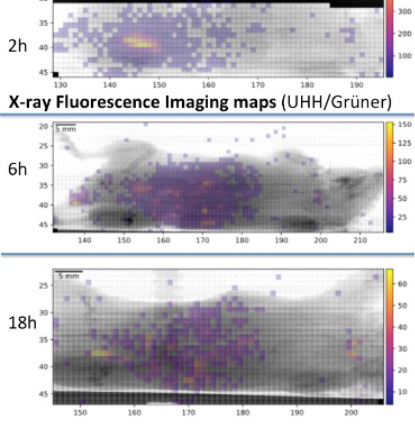URL: https://www.desy.de/research/facilities__projects/petra_iii/small_animal_imaging/DESYinform03-11-engWEB_eng.html/@@siteview
Breadcrumb Navigation

In vivo experiments at DESY
As a national research centre within the Helmholtz Association, DESY’s mission is to carry out research into and help find solutions and answers to the major challenges facing society. This explicitly includes health research. Thanks to its brilliant light sources, unique know-how in analytical methods as well as the development and operation of accelerators, DESY is in a position to contribute significantly to expanding our knowledge through medical research; because large-scale research facilities such as PETRA III can provide insights at the molecular level which can generate information crucial to developing new or improved drugs and treatments for diseases for which no adequate cures are currently available. Using novel and advanced analytical methods, for example, it is possible to track the reactions of an entire immune system over different periods of time. For these reasons, imaging experiments involving animals are also carried out at DESY at some of the PETRA III beamlines (experimental stations). Furthermore, accelerated based technologies are an important aspect to test and develop novel radiation therapies used for cancer treatments. In this contect animal experiments are generally possible at DESY.
At DESY – like everywhere else – experiments on animals are carried out in line with an exacting approval process, which is dictated by the authorities and strictly monitored by them. In their application, the scientists must explain why the scientific question can only be answered using live animals and not using alternative methods. The central aspect of the experiments that are carried out is that they should contribute to a significant increase in understanding, ultimately benefiting patients, through the expertise and analytical methods available at DESY. On top of this, handling animals responsibly, respectfully, in compliance with the rules and, above all, ethically, is also a top priority at DESY.
Less is more
DESY takes its responsibility in this context very seriously. However, there is no alternative to the animal experiments currently taking place in medical research and drug development, especially when it comes to investigating a realistic immune response. This can only be studied in a complete organism and not by simulating one or more individual organs, using organs-on-a-chip for example. Imaging methods, such as the X-ray fluorescence method mentioned earlier, can contribute to reducing the number of laboratory animals while at the same time furnishing statistically reliable insights.
By continuing to develop existing technologies further, especially in medical imaging, DESY aims to actively contribute to further improving the principle of the so-called 3Rs in research using animals.
-
Replace: The knowledge gained from animal experiments at PETRA III contributes towards
replacing living animals in medical experiments. This is achieved particularly through improved
data based on refining in silico methods. -
Reduce: Imaging procedures carried out at the synchrotron radiation source can reduce the
number of animals needed. How? A single animal can be studied under anaesthesia for a
longer period of time over several points in time, to track physiological processes. This is also
possible because the X-ray doses are far below critical levels. As a result, findings can be
obtained from a single animal over a longer period of time. The more often examinations
are conducted to clarify a question, the more animals it is possible to do without. -
Refine: The non-invasive medical imaging methods available at PETRA III reduce the need
for direct intervention in the organisms of the laboratory animals and hence also the potential
pain inflicted on the animals.
Further information on the issue of animal experimentation in research and the state of scientific knowledge is available on the website Tierversuche verstehen (Understanding Animal Experiments): https://www.tierversuche-verstehen.de/, an informational site produced by the Alliance of Scientific Organisations.
One group of users at DESY is conducting a series of experiments using mice to better understand the processes that occur in the autoimmune disorder Crohn’s disease. Crohn’s disease is a type of inflammatory bowel disease. Autoimmune diseases are caused by a malfunction of the immune system, which attacks the body’s own cells and organs as a result. In this study, the scientists are looking at the faulty responses of T helper cells, which are involved in the immune response or regulate it.
DESY furnishes them with improved tools for assessing this, using X-ray fluorescence imaging (XFI). In the process, T cells are labelled, which generate an optical echo in DESY’s high-powered X-ray beam and provide information about the immune response during the examination. The resulting findings serve as a starting point for developing new cures. At present, treatments are available that can reduce the symptoms of Crohn’s disease or other inflammatory bowel diseases, but they cannot be cured outright. Moreover, in about one third of patients, it is not even possible to relieve the symptoms. In addition, it is not uncommon for these chronic diseases to lead to cancer.

The distribution of immune cells in a mouse after different periods of time can be made visible with the help of X-ray fluorescence
Image: F. Grüner, University of Hamburg


